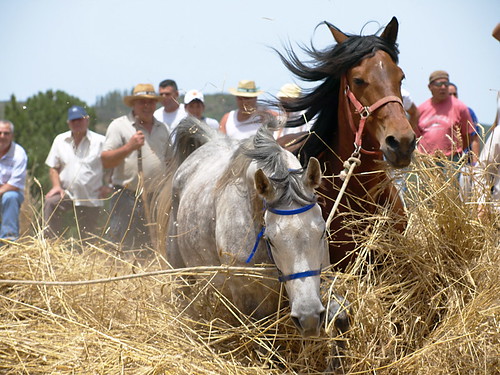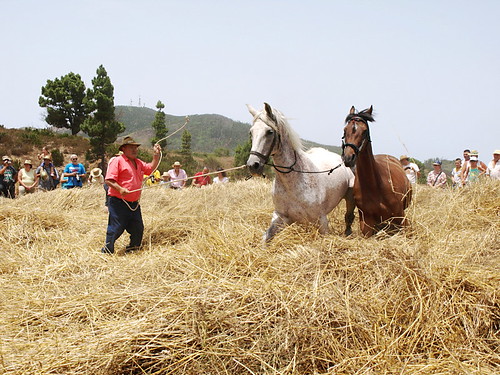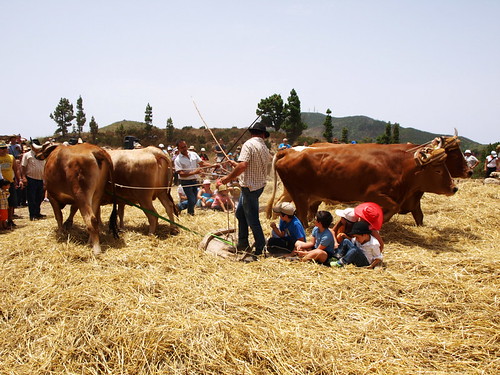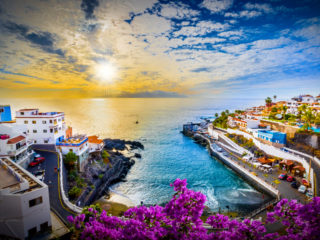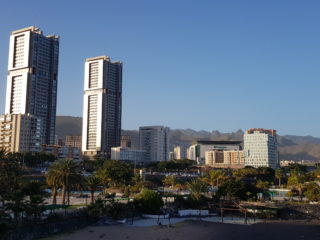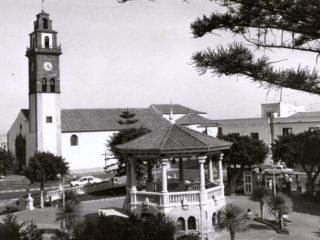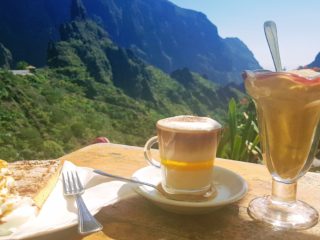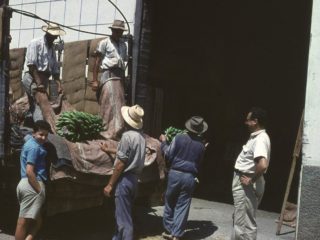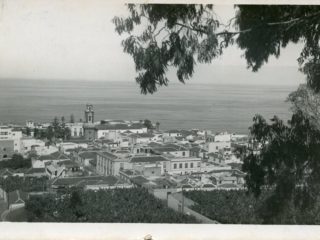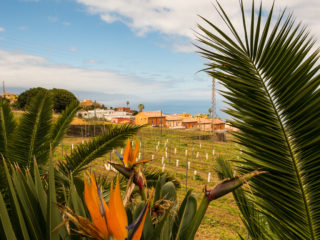Sunshine and hay are two commodities they’re not short of in the hills of El Tanque where they’ve always been an integral part of community life, made all the more precious when one of those commodities was taken away from them for over 200 years.
Perched at the top of the Acantilados de La Culata, the 16th century settlement of El Tanque took its name from the large water tank which fed the farming needs of Garachico on the coast far below. A community began to grow around the tank and they worked the fertile land to produce cereals and grain which provided them with a living and a rural idyll… until the fateful 1706 eruption.
Destroying the crops of El Tanque en route to Garachico’s demise, the eruption left a trail of barren wasteland where once fields of golden corn had reflected the sun. Poverty ensued and the Tanqueros departed in their droves, immigrating to South America in search of a living. It wasn’t until the late 19th century that they returned and used their acquired wealth to reclaim the lands and recreate and preserve the traditions of their forefathers.
Today those traditions are a treasured part of everyday life in El Tanque where high summer means two things ““ thermometers are turning red and it’s time to gather in the wheat.
DÃa de La Trilla begins early on Friday morning when the farmers take to the fields with their traditional hand held scythes. Gathering, cutting and bundling the long straws of gold, it’s back-breaking, hot and dusty work under the relentless sun of an El Tanque summer. When the last bales of wheat have finally been transferred to the era (threshing circle), folklore bands strike up their song and the kegs are opened. Tomorrow the wheat will be threshed, but for now, it’s time to celebrate the harvest with friends and neighbours.
Now in its 16th year, DÃa de La Trilla attracts farmers and neighbours by the (literally) truckload to the site of the Eco Museum in the hills above the village of El Tanque to watch the wheat being threshed traditionally. As every year, it’s a hot and windy day for the fiesta and despite being damped down with hoses, the ground wants to join in the fun, sending swirling plumes of dust to parch already dry throats and colour bare feet a rusty shade of brown.
At the gate a religious painting is being raffled and a few feet further on, the same fate awaits a live pig on the back of a truck. It’s the perfect analogy for El Tanque where farming and religion go hand in hand.
First in the row of stalls is the straw hat vendor who’s doing brisk business and whose products can be seen at regular intervals sailing over the heads of horses and oxen before coming to rest in the straw or escaping into the distant hills. A handful of stallholders are selling honey, miniature carvings, musical instruments, farm implements and clothing but as tradition dictates, it’s the bar that’s doing the best business.
Beyond the era, several stalls are occupied by the Taller Empleo Recupera group who create and conserve the parks, gardens and greenery of El Tanque. Using only ecological methods to create their gardens, they’re giving away free plants to encourage and educate others to do likewise.
When the folklore groups take their bow, it’s time for the horses to take to the ring. Tethered in teams they canter through the stacked wheat, their hooves breaking the straws down as they go. Clockwise and counter clockwise they’re driven by their handler, the sweat glistening on their necks until it’s time to tag the next team and to pitchfork more bales into the circle.
When the mountains of straw are finally laid flat by the horses, it’s time to tether the oxen. Two by two the placid beasts of burden are led by the nose into the era and harnessed to a thrashing board. Adding weight to the board and claiming a mini fairground ride are hordes of local children who ride the boards as they’re pulled around the circle, breaking the wheat down to a size that’s small enough to flail and winnow.
As the sound of the children’s laughter carries on the wind, locally grown potatoes are being boiled and fish from the coast is being fried for the traditional meal that will follow the threshing and signify the end to another DÃa de La Trilla. Accompanied by home made saffron mojo and gofio amasado and washed down with red wine from the area’s own vineyards, it’s easy to taste why keeping their traditional farming methods alive is so important to the Tanqueros and why they’ll continue to make hay while the sun shines.
